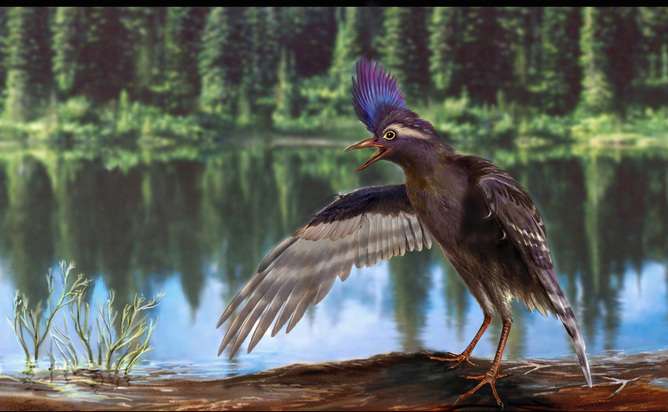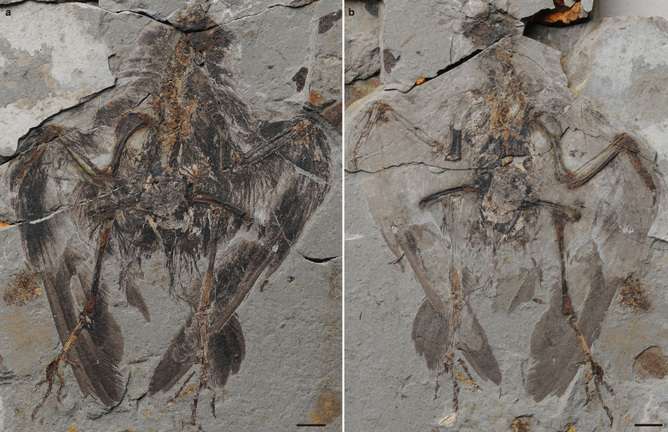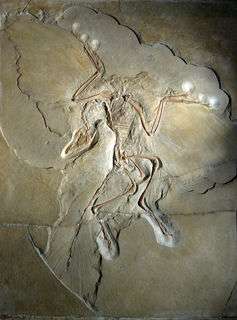Fossil of world's earliest modern bird could help us understand the extinction of dinosaurs

Fossils of the oldest member of the lineage to which today's birds belong has been found in Hebei province of Northern China. The discovery pushes back the evolutionary record for birds by nearly 6m years and challenges the traditional view of bird evolution. The fossils may one day help solve the puzzle of why dinosaurs that weren't related to birds were wiped out as a result of mass extinction.
Archaeornithura is now the oldest-known example of Ornithuromorpha, a group that includes all living birds and their fossil ancestors. The two extremely well-preserved fossils are about 130m years old, from to the Mesozoic era, which extended between 252m and 66m years ago.
A challenge for evolutionary theory
We have known for a long time that birds are the living descendants of theropod dinosaurs, an evolutionary branch that can be traced back at least 140m years to the so called "first bird" Archaeopteryx (which means ancient wing). Fossils of this creature were first found in found in Jurassic-era limestones in Bavaria, Germany, in 1861.
In recent years, however, researchers have learned two important things that have challenged that narrative. First, many researchers no longer consider Archaeopteryx to be a bird at all, rather a member of a closely-related group of feathered theropod dinosaurs. In addition, new fossil discoveries, especially from China, have dramatically widened our view of the diversity of early birds.
The fossils described in the recent study, published in Nature Communications, were dug out from silt rocks just 10m years younger than those which gave us Archaeopteryx. It is extremely surprising that ornithuromorph birds had evolved and diversified to that extent in just 10m years after Archaeopteryx.
Despite being of a similar age to Archaeopteryx, Archaeornithura was a great deal more advanced. Measuring 15cm in height, it had well-developed feathers, an advanced abdominal region and wings and lacked feathers on its legs, suggesting it was a wader.

Survival of the high-flyers
The finding of Archaeornithura is important, because it may help shed light on why only the types of dinosaurs that evolved into modern birds survived the famous end-Cretaceous mass-extinction 66m years ago.
Other groups of birds, such as Enantiornithines, which often had teeth and clawed fingers, became extinct – but the branch that went on to give rise to all modern birds survived for some reason. If we could pin down when and how ornithuromorph birds evolved from their earlier ancestors and what makes them different to other, earlier birds, we might understand the reasons for the dramatic success of modern birds and why they made it while other dinosaurs died out.

A great deal more research is needed to solve the puzzle of bird evolution. Archaeornithura is not enough on its own to provide all the answers. But fossils such as this will certainly help inform the debate and assist in our search for related species. Understanding the evolution of modern birds and how they made it across one of the largest extinction events of all time is surely a major holy grail of evolutionary biology.
Journal information: Nature Communications
Source: The Conversation
This story is published courtesy of The Conversation (under Creative Commons-Attribution/No derivatives).
![]()













.jpg)






